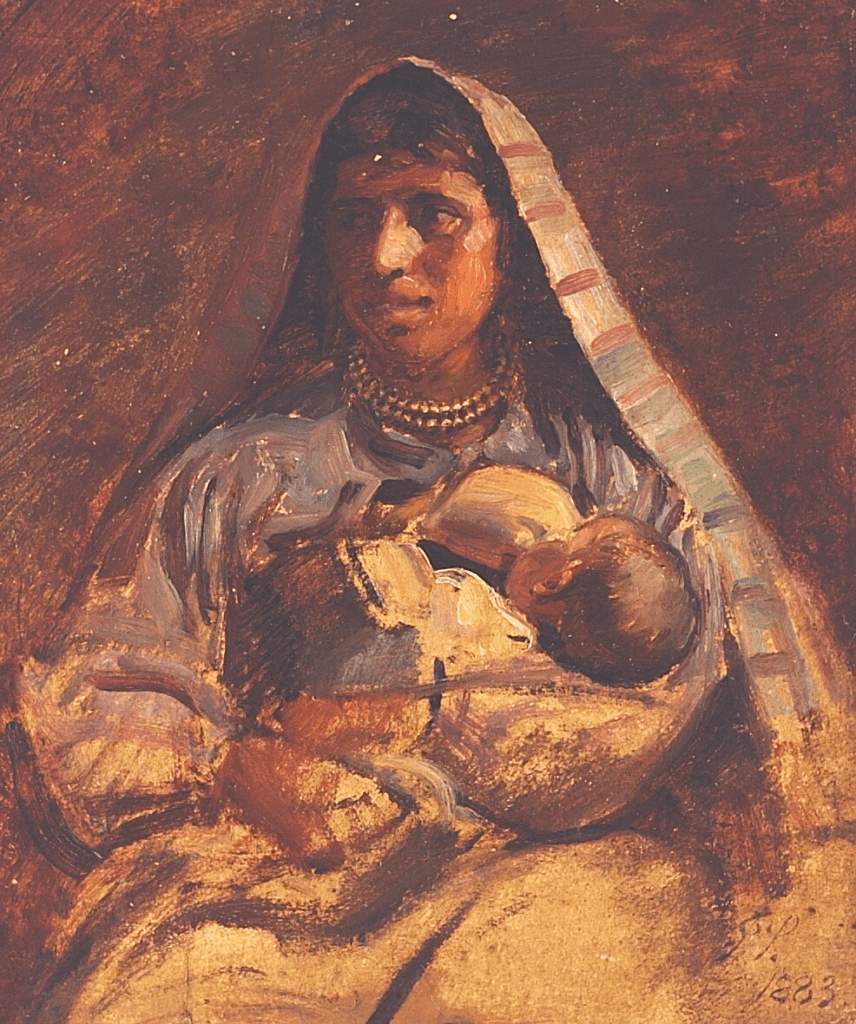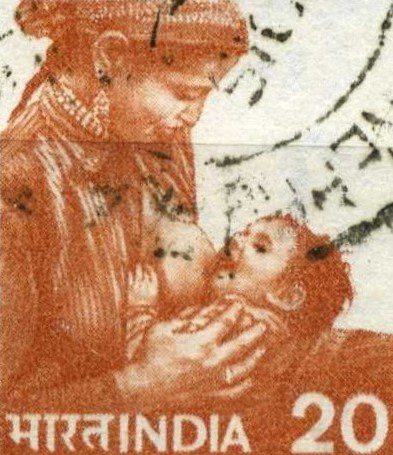Puja Persaud
True Blue, Grenada, West Indies

Having a baby demands drastic changes in lifestyle, eating habits, and sleeping patterns. Many cultures across the world practice postpartum rituals that “allow the mother to be ‘mothered’,” and help to “facilitate the transition into motherhood.”1 For generations, the Indian descendants residing in Guyana of South America have helped to revitalize the health of mothers after childbirth. In this culture, women in the family or community prepare a traditional dish known as “halwa” for the new mother.2 It is the only time in which halwa is generally made and eaten. This postpartum dish allows the mother to consume a large number of calories to prevent malnutrition and is also said to promote lactation.2 Additionally, halwa may improve maternal mental health, particularly in cases of postpartum depression.3
The ingredients of halwa include ginger, fennel, cinnamon, cumin, turmeric, long pepper, black pepper, sugar, ghee, evaporated milk, condensed milk, and flour.2 These items are combined into a sweet mixture with the consistency of pudding, which is eaten with roti or other types of bread. Ginger and fennel have been used in Asia, the Middle East, and other regions for centuries as natural galactagogues, substances said to “induce, maintain, and increase milk production.”4 Studies have shown that the constituents of ginger induce vasodilation by acting on muscarinic receptors.5 The vasodilation effect increases blood flow to the breasts, increasing milk production. The galactagogue properties of fennel as well were first reported in De Materia Medica between AD 50–70 by Greek botanist and surgeon Pedanius Dioscorides.4 The constituents of fennel have been shown to inhibit the action of dopamine on lactotroph receptors to increase prolactin—the hormone responsible for breast milk secretion.6 Fennel is also rich in trace elements such as zinc, iron, and copper.7 Deficiencies of these elements have been linked to postpartum depression.8

The other ingredients in halwa may serve as antioxidants and carbohydrates to replenish the mother after childbirth and reduce oxidative stress and inflammation.9 Studies have shown mixed results on the benefits and harm of turmeric during pregnancy and lactation.9 While the ingredients in halwa are reported to have minimal serious adverse effects, it is important to note that excess galactagogues and trace elements can be harmful to women with underlying health conditions.9
Herbal remedies are used in postpartum rituals around the world to promote maternal health and stimulate breast milk production. In Turkey and Indonesia, fenugreek tea is served to increase milk production.5 The banana flower is commonly used in Southern Asia and has a similar mechanism of action to fennel.5 In Japan, new mothers consume Xiong-gui-tiao-xue-yin, a traditional herbal concoction of thirteen ingredients that includes ginger.5 Similarly, mothers in Guatemala use herbal teas containing plants from genera Artemisia and Pimpinella, as well as oregano and white honey, to alleviate pain.1
The shared goal among diverse cultures is to promote the development of newborns by improving the health of mothers. Understanding the influence that postpartum rituals have on diet adds to the cultural competency of healthcare professionals and helps them to improve the health of mothers around the world.
References
- Dennis, Cindy-Lee, Kenneth Fung, Sophie Grigoriadis, Gail Erlick Robinson, Sarah Romans, and Lori Ross. “Traditional postpartum practices and rituals: a qualitative systematic review.” Women’s Health 3, no. 4 (2007): 487-502 (see 487).
- “Halwa Recipe – Celebrating the Birth of a Baby.” Alica’s Pepperpot, June 1, 2021. https://alicaspepperpot.com/halwa-recipe-celebrating-the-birth-of-a-baby/.
- Etebary, Sahabeh, Sara Nikseresht, Hamid Reza Sadeghipour, and Mohammad Reza Zarrindast. “Postpartum depression and role of serum trace elements.” Iranian Journal of Psychiatry 5, no. 2 (2010): 40.
- Penagos Tabares, Felipe, Juliana V. Bedoya Jaramillo, and Zulma Tatiana Ruiz-Cortés. “Pharmacological overview of galactogogues.” Veterinary Medicine International (2014).
- Khairani, Astrid Feinisa, Teuku Muhammad Adzdzikri, Shafa Tasya Menggala, Muhammad Hasan Bashari, Enny Rohmawaty, and Achadiyani Achadiyani. “The potential of medicinal plants as galactagogue in Indonesia: A review from medical perspective.” Biomedical and Pharmacology Journal 14, no. 3 (2021): 1595-1612.
- Albert-Puleo, Michael. “Fennel and anise as estrogenic agents.” Journal of Ethnopharmacology 2, no. 4 (1980): 337-344.
- Marengo, Katherine. “Fennel: Health Benefits, Recipes, Forms, Nutrition and More.” Medical News Today. MediLexicon International, July 12, 2019. https://medicalnewstoday.com/articles/284096.
- Aoki, Chieko, Kenji Imai, Taro Owaki, Tomoko Kobayashi-Nakano, Takafumi Ushida, Yukako Iitani, Noriyuki Nakamura, Hiroaki Kajiyama, and Tomomi Kotani. 2022. “The Possible Effects of Zinc Supplementation on Postpartum Depression and Anemia.” Medicina 58, no. 6: 731. https://doi.org/10.3390/medicina58060731.
- Smith, Joyce. “Fenugreek, Ginger and Turmeric Increase Milk Volume in Breastfeeding Mothers.” Natural Health Research Institute, June 18, 2021. https://naturalhealthresearch.org/fenugreek-ginger-and-turmeric-increase-milk-volume-in-breastfeeding-mothers/.
- Ramulondi, Mmbulaheni, Helene de Wet, and Nontuthuko Rosemary Ntuli. “Traditional food taboos and practices during pregnancy, postpartum recovery, and infant care of Zulu women in northern KwaZulu-Natal.” Journal of Ethnobiology and Ethnomedicine 17, no. 1 (2021): 1-19.
PUJA PERSAUD, MPH, is a second-year medical student at St. George’s University, School of Medicine in Grenada, West Indies. She aspires to be a physician who applies her knowledge of public health and medicine to improve the health of underserved communities.
Submitted for the 2022–23 Medical Student Essay Contest and Highlighted in Frontispiece Volume 15, Issue 3 – Summer 2023

Leave a Reply